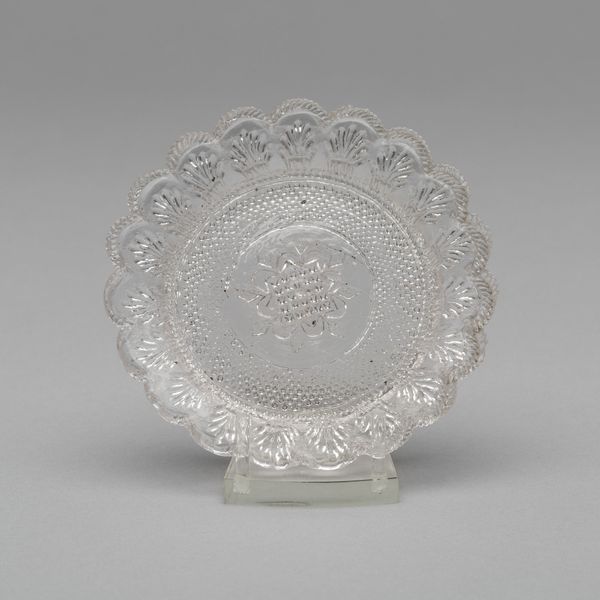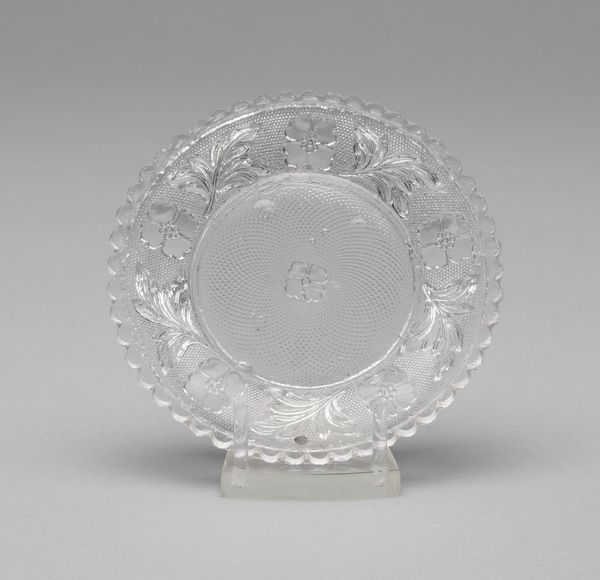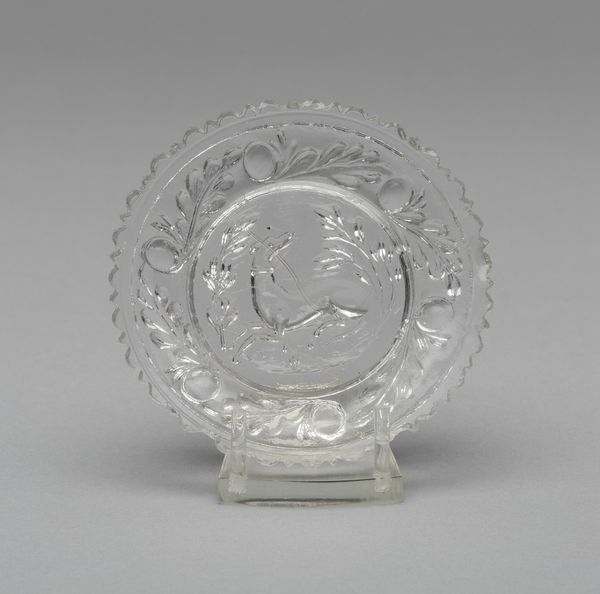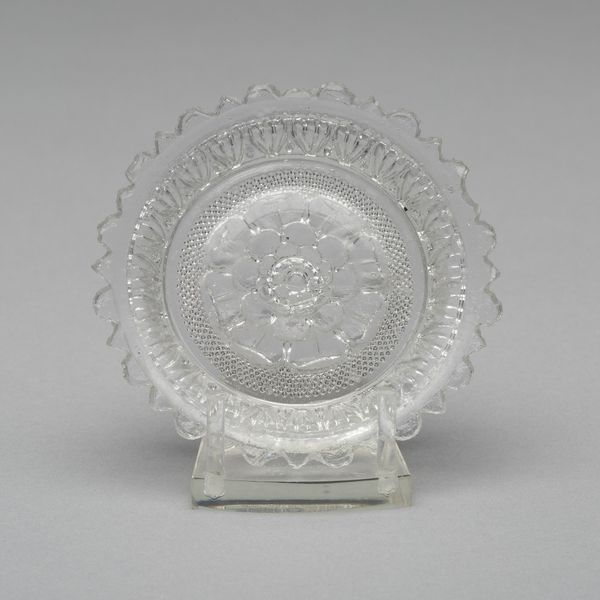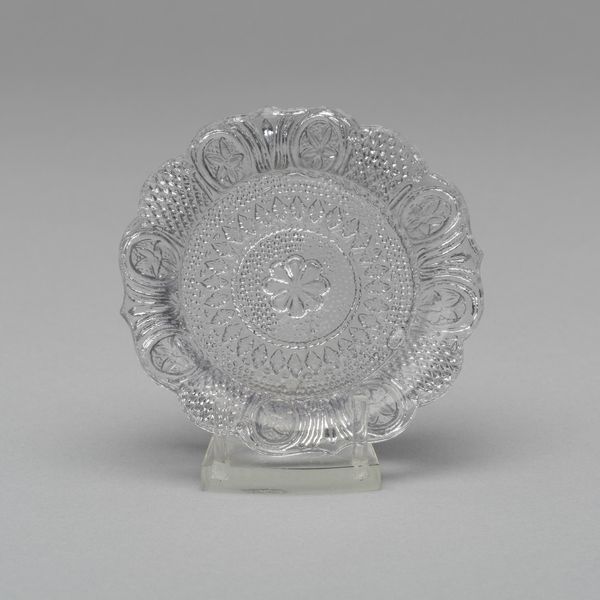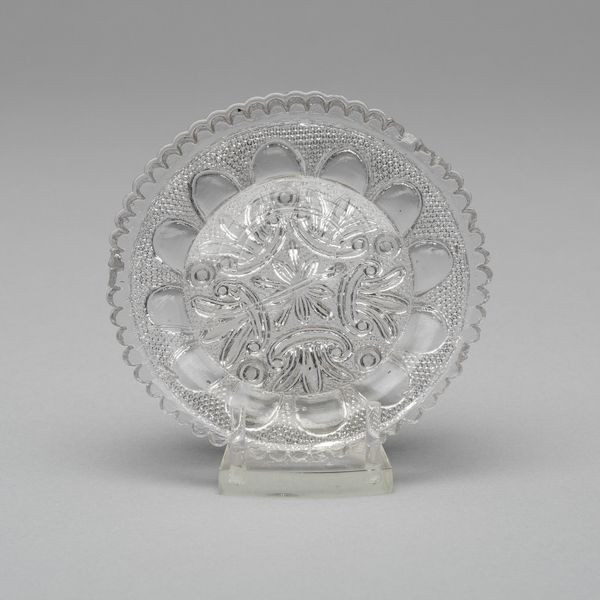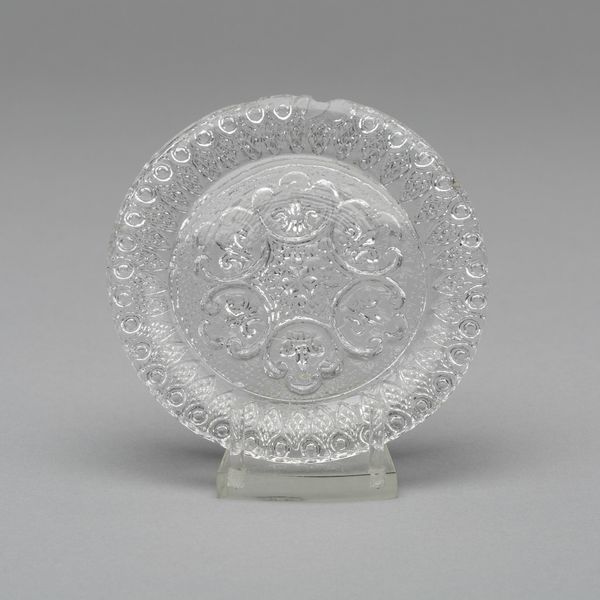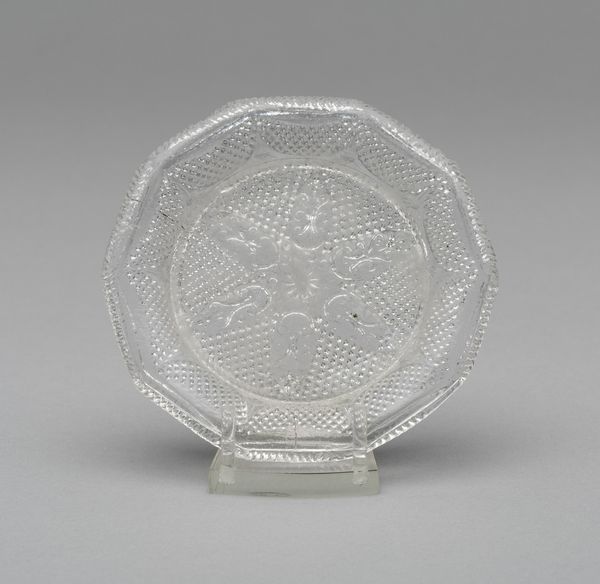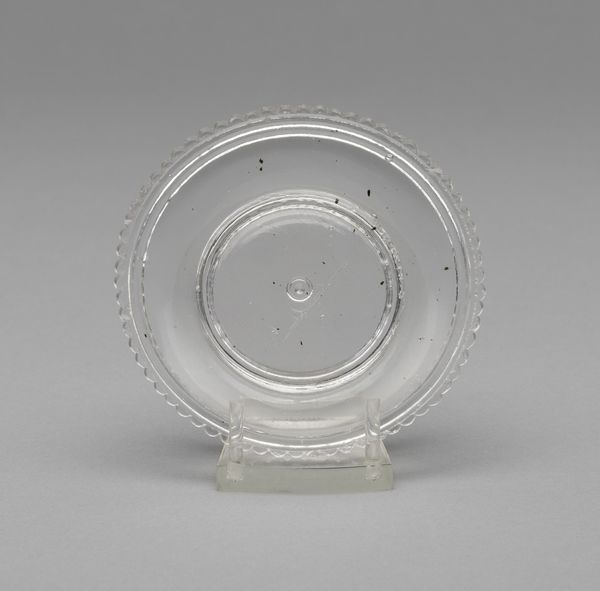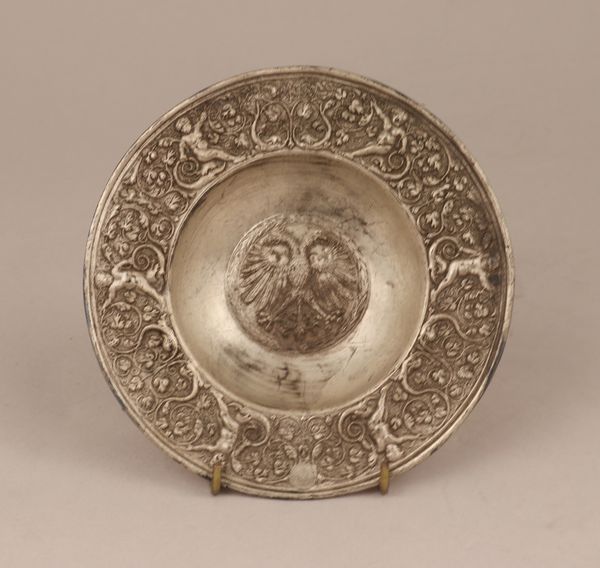
glass
#
glass
#
ancient-mediterranean
#
decorative-art
Dimensions: Diam. (3 11/16 in.)
Copyright: Public Domain
Editor: Here we have a “Toy Plate,” made around 1850. It’s this delicate glass dish, and the relief image in the center seems to show some sort of figure or animal. It is so small, so subtle in its design... What can you tell me about what's happening compositionally here? Curator: Let's consider its construction, for the composition seems simple at first glance. The plate is a study in circularity—the outer rim echoes the inner relief. Observe how the craftsman manipulates light through the glass. What semiotic meanings might be derived from the animal at its centre? Editor: I see it now! I think it's a dog, or perhaps a fox, sitting upright and maybe holding something in its paws. I'm curious if there is a suggestion about this canine, the golden rim... the choices feel considered, right? Curator: Precisely. The relationship between figure and ground is key. Note how the relief doesn't simply fill the circle, but interacts with it, creating tension and dynamism, with colour setting apart this intimate world within it. Consider how that limited palette reinforces its simplicity of design? Editor: It seems almost too simple, like the color could add another dimension or layer. Could that have changed how we read it? Curator: Hypothetically, yes, of course. Yet the constraint, and it must be considered as a constraint, enforces a focus. Are we invited to reflect on its function as “toy?" Perhaps it reflects upon ideas of ancient games as artistic experience or domestic bliss? Editor: I never thought about it in relation to its ancient elements, but it makes sense it has that echo. So it's more than just a plate, more than a toy! Curator: Indeed! The "Toy Plate" is less an aesthetic work, more of structural articulation—an invitation, through these careful semiotic relationships, to contemplate its place within a cultural context.
Comments
No comments
Be the first to comment and join the conversation on the ultimate creative platform.
